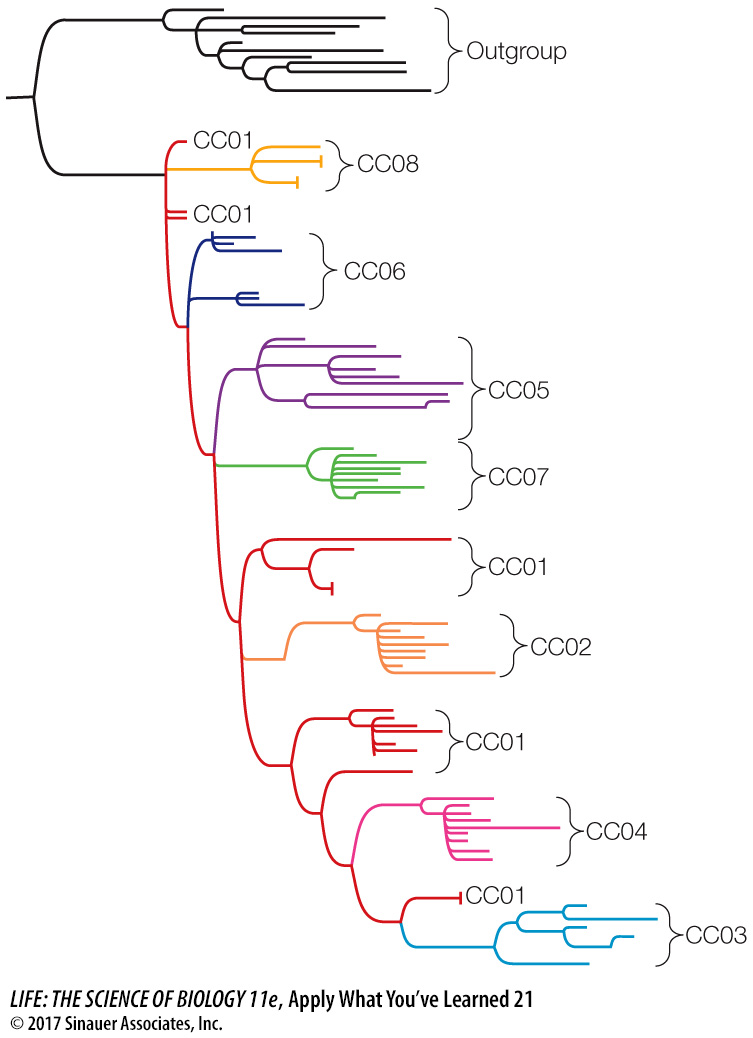Apply What You’ve Learned
466
Review
21.1 Phylogenetic trees represent evolutionary relationships.
21.1 Phylogenies enable biologists to compare organisms and make predictions and inferences based on similarities and differences in traits.
21.3 Biologists use phylogenetic trees to investigate living organisms, explore instances of convergent evolution, and reconstruct ancestral states.
Phylogenetic trees are used throughout biology, but only in recent years have they become important for forensic investigations. In these cases, samples are “blinded” to the investigators by assigning numbers to each sample, rather than using people’s names. Only after the conclusions are finalized do other investigators decode the numbers to reveal the results.
A recent criminal case in Texas charged a defendant with knowingly and intentionally infecting a series of women with HIV. A phylogenetic analysis was used to demonstrate that the defendant transmitted HIV to his victims. (Other evidence was needed to prove knowledge and intent.) In this case, sequences of HIV isolated from the victims and the defendant, together with the closest sequences from an HIV database (the outgroup), were compared and used to construct a phylogenetic tree of the viruses. Viruses from each individual in the case are colored alike on the tree below. The labels are the codes for the individuals in the case. All of the individuals labeled CC01–

Questions
Question 1
Which of the individuals labeled in the tree is consistent with being the source of this infection cluster? Why?
Viruses from CC01 are found across the tree, which is consistent with CC01 transmitting viruses over time to the other individuals.
The individual labeled CC01 is consistent with being the source of the infection, because that is the only individual with HIV sequences that are more closely related to HIV sequences in all of the other individuals, rather than to sequences sampled only within a single individual. [In the trial, CC01 was revealed to be the defendant in the case].
Question 2
Why is the tree inconsistent with any of the other individuals being the source of infection within this cluster?
The viral sequences sampled from each of the other individuals in the cluster are monophyletic, indicating a single origin, with no further transmission to other individuals. Thus, the tree is inconsistent with CC02–CC08 being the original source of infection in this cluster.
Question 3
What was the purpose of including an outgroup made up of individuals that were outside the epidemiological cluster?
Inclusion of viruses from outside the epidemiological cluster also tests the hypothesis that all viral sequences in this cluster are derived from a single ancestral virus. The outgroup was needed to root the tree, which in this case identifies the direction of the transmission of events.